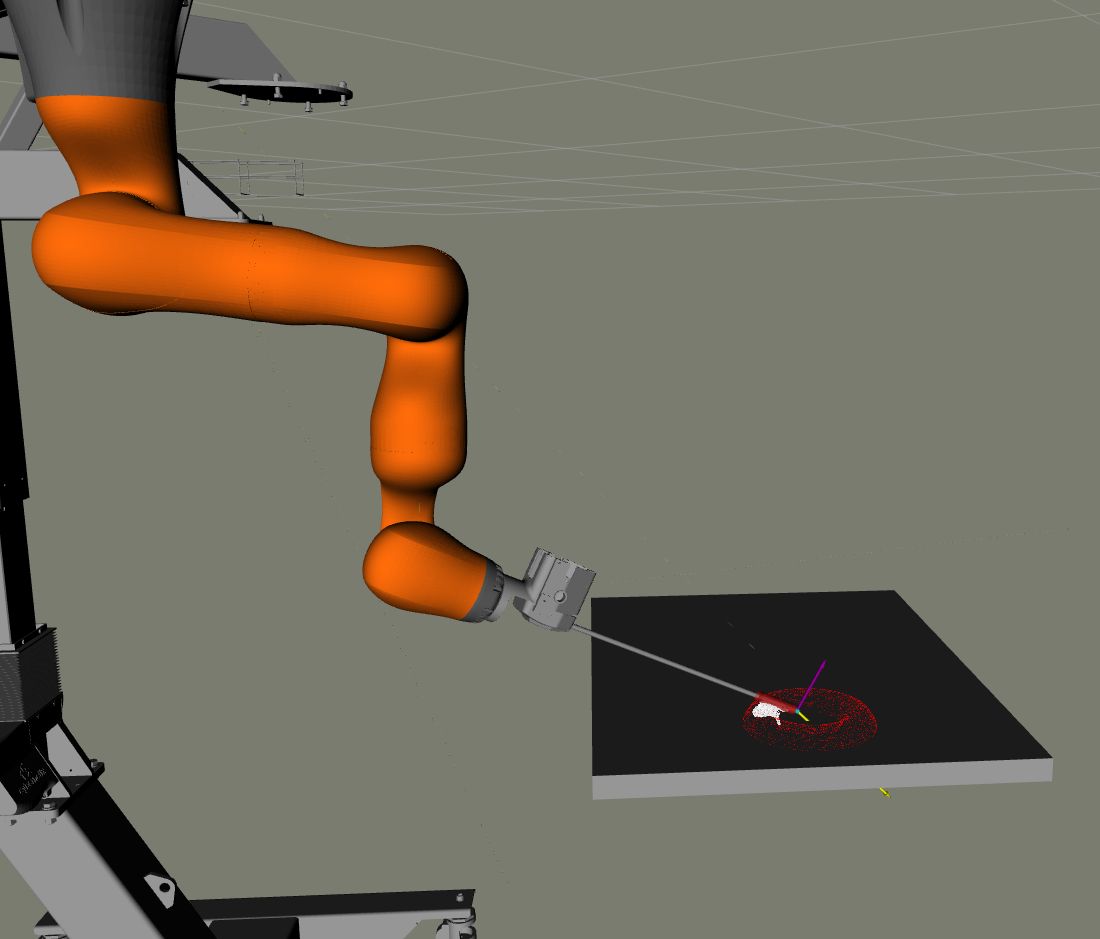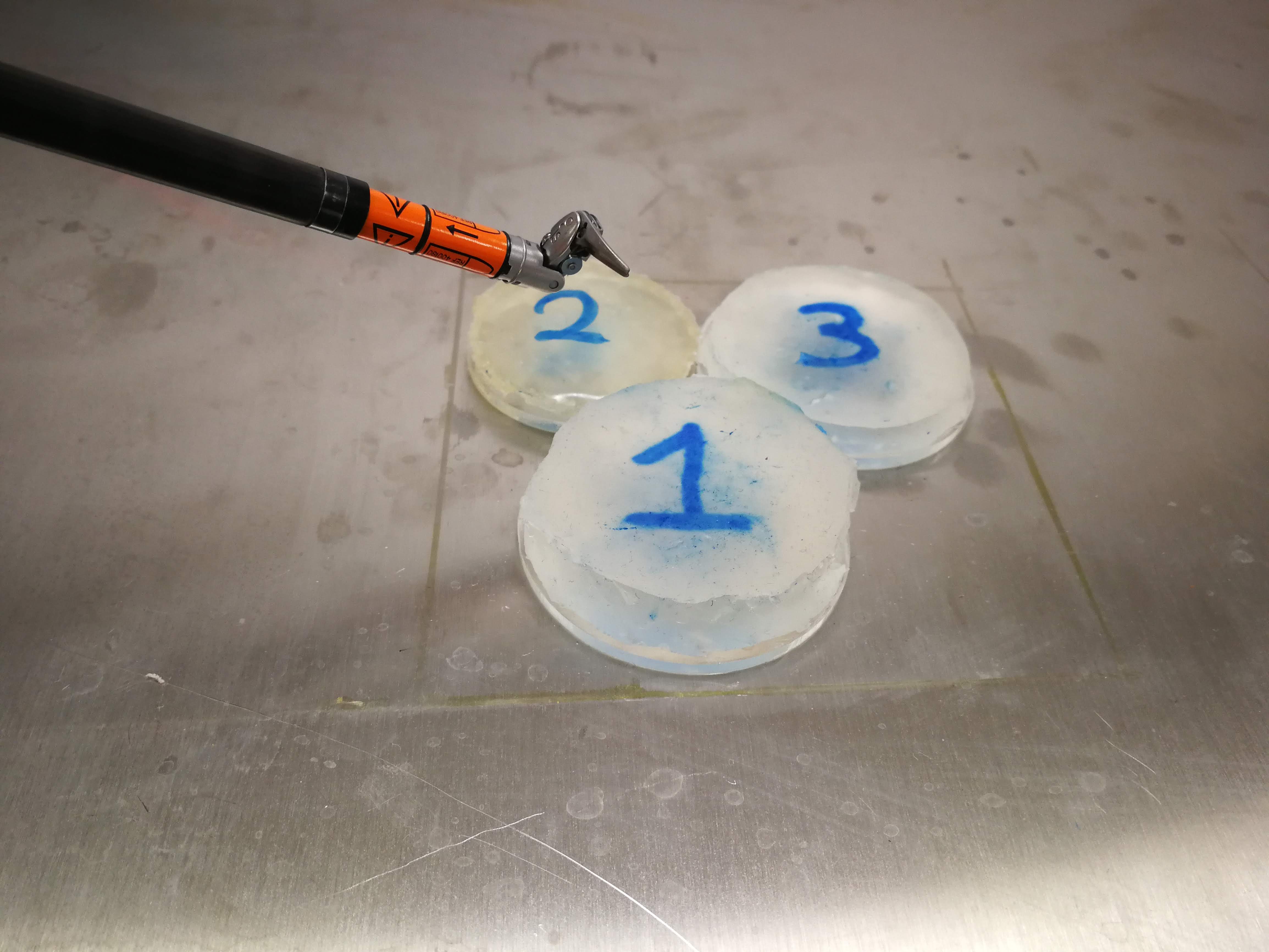Teleoperation
Bilateral teleoperation with haptic feedback for minimally invasive surgery.
Abstract
A desktop haptic device is used to teleoperate an industrial redundant and compliant robotic arm with a surgical instrument mounted on its end-effector. The master and slave devices are coupled in a bilateral position-position architecture. Force feedback is provided by the master haptic device to the user, from the position of the slave’s wrist. A surgical task (palpation) that involves force feedback is presented and tested in a user study with surgeons and non-medical participants. Results show that users easily discern between three different materials during palpation given minimal familiarisation time. Active constraint enforcement is also integrated with the system as a sensitive area around the palpation samples which the slave instrument is prohibited to enter {& cite Psomopoulou2020 %}.
Key points
- A position-position control architecture is utilised to provide force feedback where both robots are controlled to track each other’s TCP.
- Substantially different master and slave robots (in terms of size and dynamics).
- Palpation of Soft Tissue-Like Materials.
- Application of Active Constraints Enforcement.



Video
Project scope
This work was part of the SMARTsurg project. Other publications include: [1], [2], [3], [4], [5].
References
- CRASIncision Port Displacement Modelling Verification in Minimally Invasive Surgical RobotsIn Joint workshop on New Technologies for Computer/Robot Assisted Surgery, Jul 2018
- CRASUsing current measurement to estimate palpation and grasping forces in robot-assisted minimally invasive surgeryIn Joint workshop on New Technologies for Computer/Robot Assisted Surgery, Jul 2018